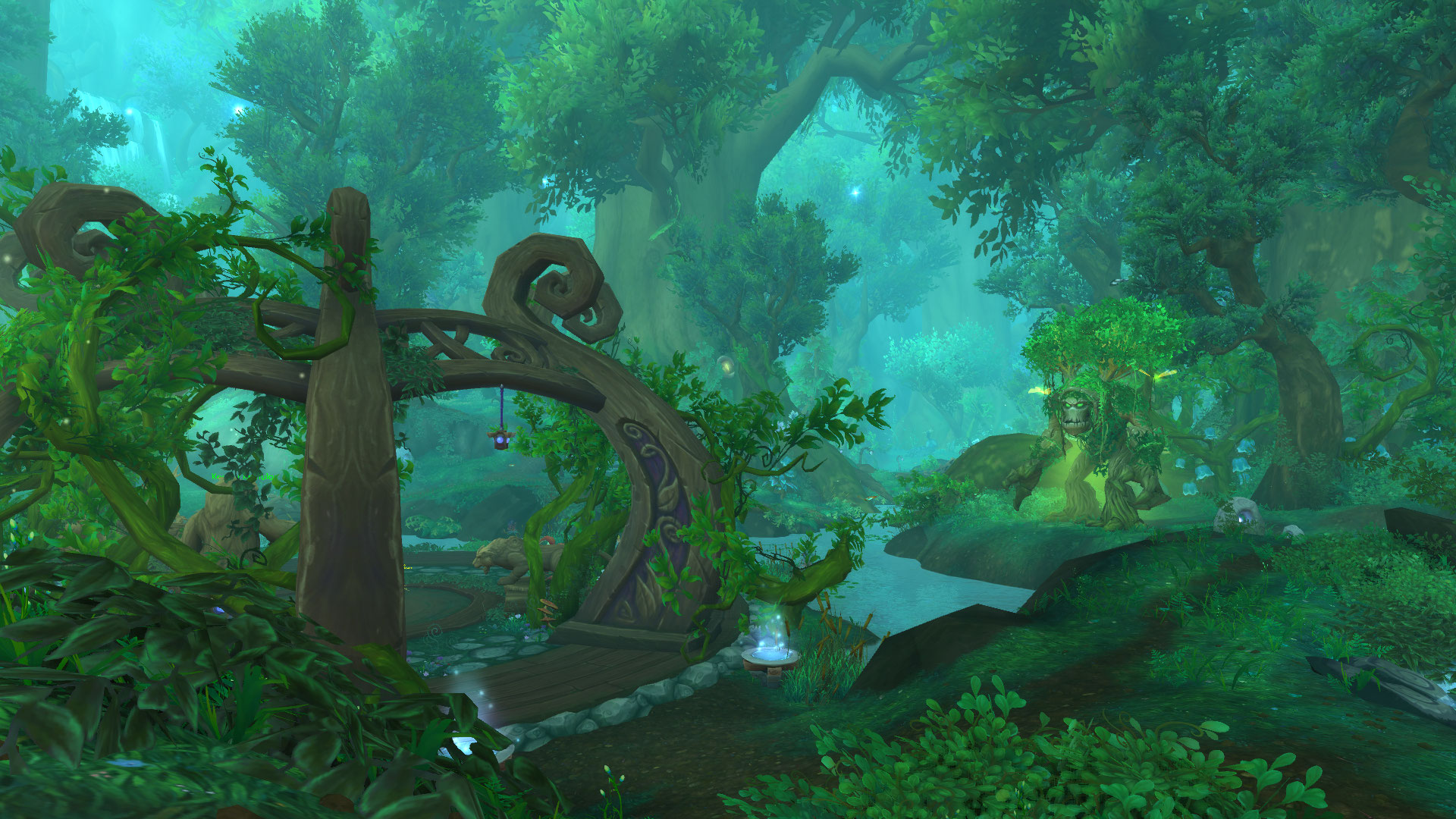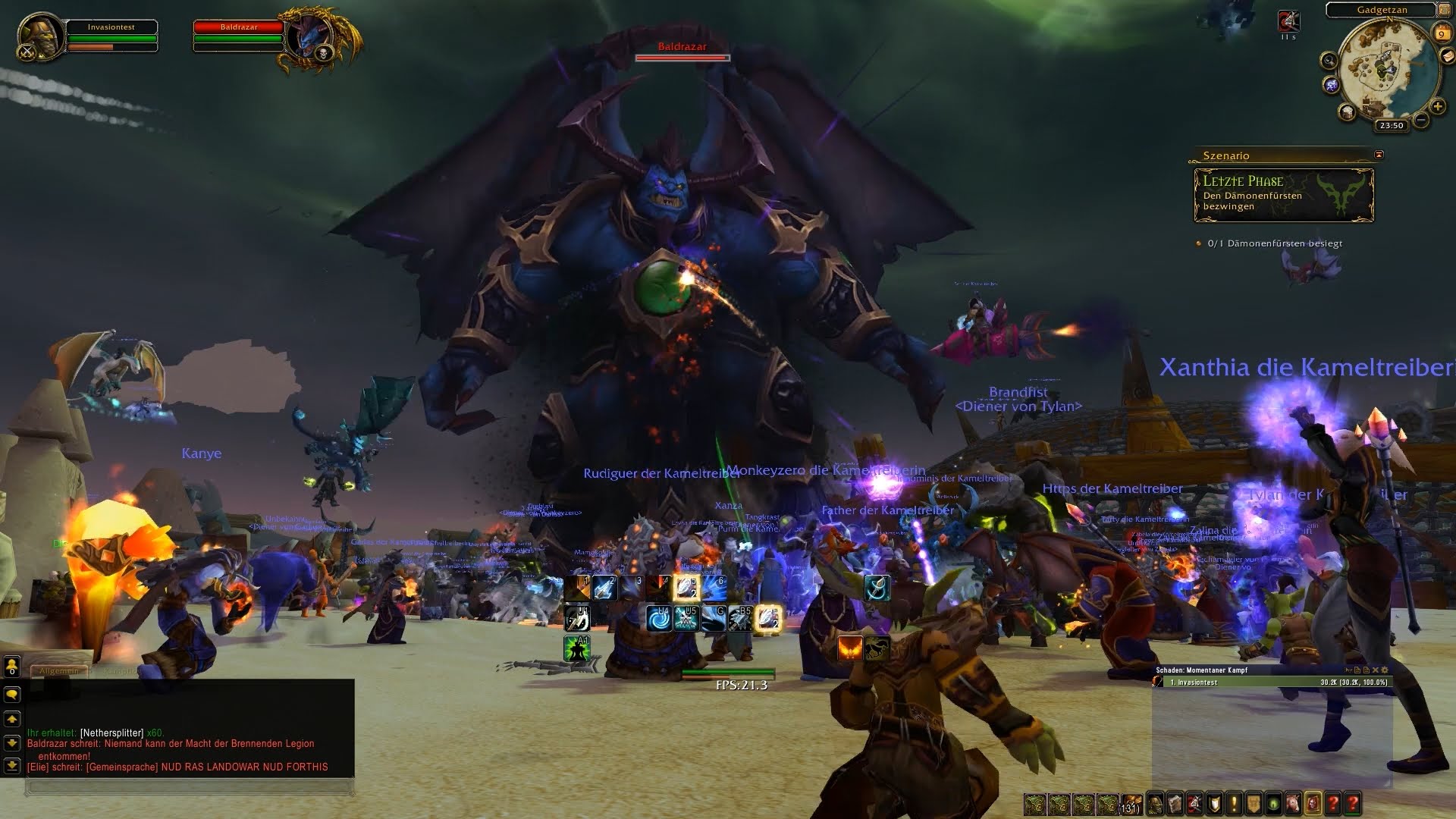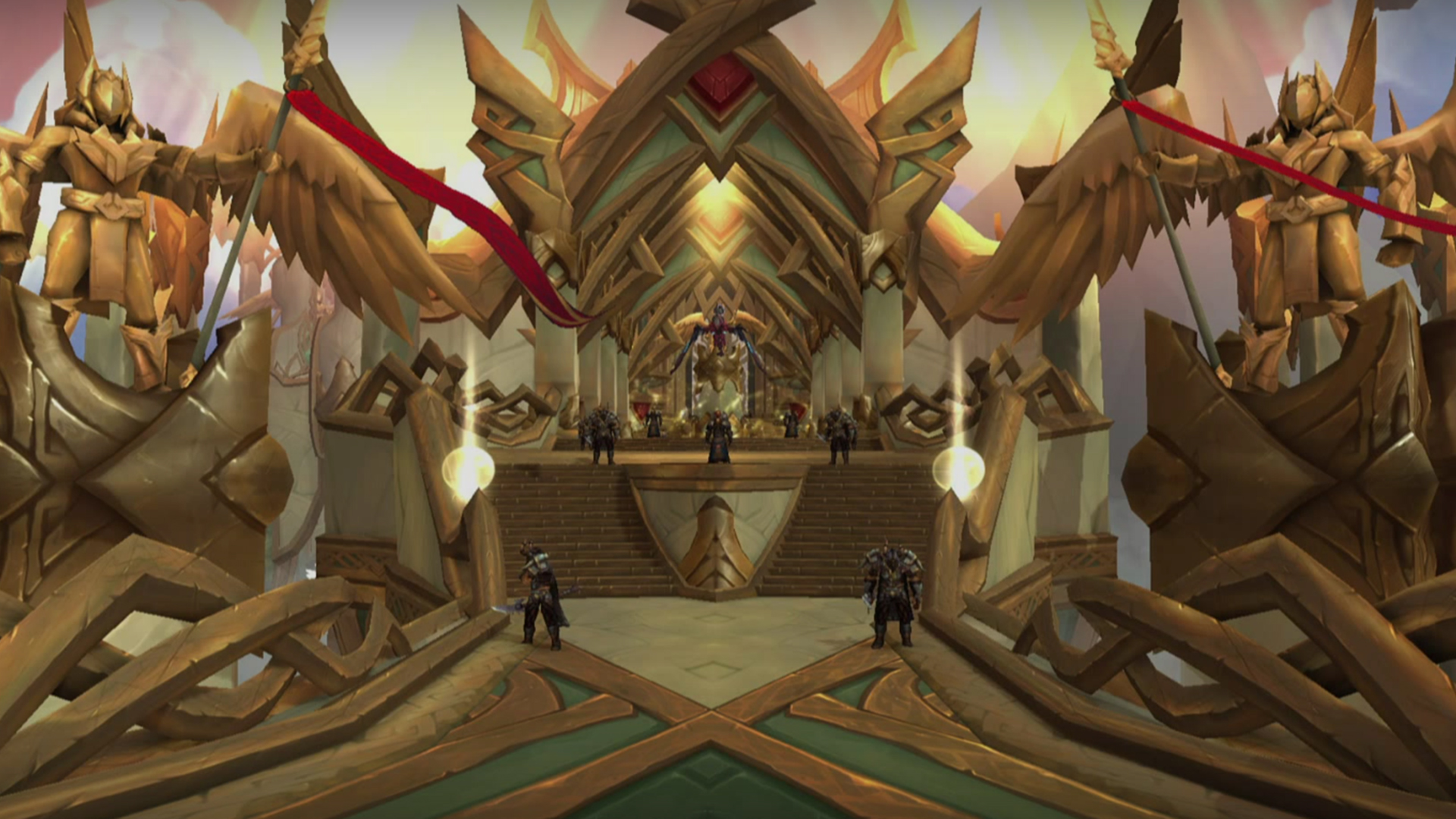The five biggest changes in World of Warcraft: Legion
With sweeping updates to gear, dungeons, and PVP, Legion isn't the same ol' song and dance.

The launch World of Warcraft's Legion expansion is only days away, which means you should be elbow deep in the things you need to wrap up before it arrives. But once it does, keeping track of everything can be pretty overwhelming—especially considering how much Legion changes about the Warcraft we know and love. There are the basics of the expansion, like the new Broken Isles zone and an increased level cap of 110, but Blizzard is also adding some new ideas that borrow from its other games like Diablo. I've been spending a lot of time playing the beta, so let's break down some of the biggest resources you'll be putting to use to defend Azeroth from the Burning Legion.
Unlocking the power of your artifact weapon
The most immediate change you're going to recognize early in Legion is the introduction of artifact weapons for each class. The quest to earn your first artifact weapon is given to you the moment you arrive in the Broken Isles and will replace the need to farm better weapons like you would during previous expansions. Instead, artifact weapons are customizable items that earn special experience points that you can use to power them up and even unlock new abilities for use in combat.
Similar to a tech tree, each artifact weapon has nodes that you can invest 'artifact power' into to buff up their damage and abilities. Be intentional with what route you choose to move through the weapon, as unlocking all the nodes will take months of work. Each weapon also has three slots that you can place special relics into for extra traits and further customized abilities while also increasing the overall power of the weapon.
As you level to 110, your weapon will grow alongside you (and for months afterwards). Each specialization within each class has its own unique weapon, so you'll need to focus on one specialization for a while and the other artifact weapons will become available in time. Each one is a unique design that typically draws from established Warcraft lore, but you're not bound to its traditional appearance either. As you complete quests, you'll also begin to unlock new aesthetic options for the weapon so you can tailor it to suit your look.
Replacing garrisons with the new class halls
Remember Garrisons from Warlords of Draenor? Those Farmville-style bases that had you setting alarms on your phone to remember to go and pick up your followers as if they were kids after a swimming lesson? Well those are back—but they're far less annoying and, best of all, no longer isolate you from everyone else who signed up to play an MMO. Where garrisons often felt like an obligation you had to make time for, class halls in Legion are at the center of just about everything you'll be doing in the expansion. That is to say, you'll want to spend time with them.
Class halls are where you'll be upgrading your artifact weapon, picking up new class-specific quests, and scouting out new zones to go and level in, but they also have a ton of useful features that will keep you coming back every few hours. Firstly, the follower system from Warlords of Draenor returns but heavily overhauled to make it less of a chore. Instead of managing a few dozen followers, you have five champions that you send out on real-time missions for resources and items. To help those followers on their missions, you can also invest resources into building an expendable militia that can increase your chances of success. Class halls can also be upgraded to add specific passive buffs to your character, like a chance to earn extra loot from a quest or the ability to equip more than one legendary item. Upgrading your class hall will take an exponentially-increasing amount of time, so focus on it early and constantly.

A new PvP system
If the idea of killing Gul'Dan and driving back the Burning Legion isn't nearly as important to you as mercilessly slaughtering your fellow player, then the sweeping changes to the PVP system will be of great concern to you. Some of the changes are contentious, but they do make endgame PvP far more approachable for people who don't have the time to dedicated to both PvE and PvP.
The biggest gaming news, reviews and hardware deals
Keep up to date with the most important stories and the best deals, as picked by the PC Gamer team.
The previous iteration of PvP used a special currency you earned from killing players to spend on PvP-specific gear as a way of progressing, but that system is now gone entirely. All gear in Legion is appropriate for use in PvP and the statistics each provides is now equalized across all players within a battleground. Instead, equipment's item level will provide a very tiny percentage buff on stats so that those wearing the most powerful gear will have a slight edge over those who aren't. That sounds frustrating at first, but in addition to the new PvP talents, it makes quite a bit of sense.
It's hard to find a meaningful part of World of Warcraft that hasn't been changed in some way.
Instead of earning better armor to increase your PvP capabilities, players now achieve ranks which unlock special PvP talents that enhance their abilities. As players unlock better talents for their class, they'll quickly outgrow the advantage gained by better gear. The new changes also incorporates a relatively Call of Duty-like prestige system, where once you reach rank 50 in PvP you can reset your rank back to one in exchange for cosmetic skins and other special rewards.
World Quests and the Legion endgame
Daily quests have been a staple of World of Warcraft's endgame for years now, but in Legion they're now borrowing a few pages from Diablo 3's Adventure Mode to be less repetitive. Whenever you log in, you'll have points of interest scattered all across the Broken Isles that mark world bosses to kill or specific dungeons that need beating, and completing a given number of them will reward you with powerful gear upgrades. Each world quest has a rarity identifier which also increases the quality of the loot you get from completing them including ultra-tough quests that will require a party in order to tackle.

Fortunately, these quests aren't exactly daily in nature like their predecessors were. If you're unable to login each day to complete them, the rarer ones carry over, with epic purple quests sticking around for a whole week. What's better, these quests also scale their rewards to match whatever your current item level was when they spawned, meaning you can always look forward to marginally better upgrades pushing you forward.
'Mythic+' Dungeons and raids
Speaking of Diablo 3, dungeons are also becoming a lot more like the Rift system wherein they now contain randomized modifiers that increase their challenge for even better rewards. In order to take on these dungeons, you'll need a Mythic Keystone which you can find on the dead bodies of any Mythic dungeon's final boss—and you'll earn at least one a week from clearing each Mythic dungeon once. By slotting that Keystone into a special pedestal at the beginning of each dungeon, you can then turn a normal Mythic dungeon into a Mythic+ dungeon which increases the damage and health of all enemies and also includes a clock that you need to beat—though running out of time will still give you loot.
If you beat the dungeon under the time allotted, your Keystone levels up and points you to another random Mythic dungeon. Using a leveled up keystone to challenge the new dungeon will make enemies even stronger and at levels three, seven, and ten will also introduce stacking 'affixes' which give enemies all sorts of nasty abilities to contend with. Affixes can do everything from causing enemies to explode upon death to creating damage pools that spawn underneath your party's casters. The rewards for completing higher level Mythic+ dungeons are worth the effort though, and will be on par with the best gear in Legion.
Raiding, however, doesn't remain all that unchanged from previous expansions. Along with Mythic+ dungeons, raids will be released a few weeks after Legion launches to give everyone a chance to prepare and gear up. So far, two raids have been announced with the first being The Emerald Nightmare.

And everything else in between
Above are some of the biggest new features in Legion, but there's dozens of smaller tweaks that are going to have an effect as well. Perhaps the biggest one that all players will appreciate is the way level scaling now works. In previous expansions, each zone had a range of levels it was tailored to, but in Legion all zones and the early dungeons will automatically scale to your current level. You can now choose which zones you want to focus on when instead of following a linear path.
Other changes include the new transmog system (which is already available) that unlocks skins for equipment the moment you obtain the item and stays with you even if you get rid of it. There's a handy new window that compiles all of the skins you've earned and you can visit a special transmog NPC in major cities to quickly change your character's appearance.
Finally, professions have been given a significant overhaul and are now centered around specific questlines that will teach you new recipes instead of just buying them from a vendor. Those recipes can also be upgraded to lessen the amounts of materials they need. Unlike in Warlord of Draenor, where crafting felt like an afterthought, Legion returns professions to their rightful place as a meaningful way of getting some of the best gear before the raids arrive.
With all of those changes—some with surprising inspirations from other Blizzard games—it's evident that Blizzard isn't keen on recreating the disappointment of Warlords of Draenor. It's hard to find a meaningful part of World of Warcraft that hasn't been changed in some way (even the attack animations are new), but whether that all comes together to form a satisfying expansion remains to be seen. Stay tuned for further WoW coverage and our review of Legion when it launches next week.
With over 7 years of experience with in-depth feature reporting, Steven's mission is to chronicle the fascinating ways that games intersect our lives. Whether it's colossal in-game wars in an MMO, or long-haul truckers who turn to games to protect them from the loneliness of the open road, Steven tries to unearth PC gaming's greatest untold stories. His love of PC gaming started extremely early. Without money to spend, he spent an entire day watching the progress bar on a 25mb download of the Heroes of Might and Magic 2 demo that he then played for at least a hundred hours. It was a good demo.


